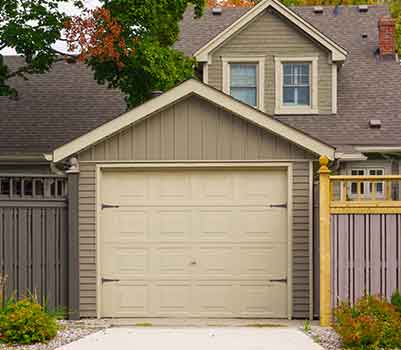Englewood Garage Door Repair
A Mobile Garage Door Company
A Mobile Garage Door Company
Call Today: (720) 310-1924

 Garage doors play a crucial role in both the functionality and aesthetic appeal of a home. When it comes to choosing a garage door, two popular options are single panel and sectional garage doors. While they serve the same purpose of providing access to the garage, they differ in terms of construction, operation, and overall design. In this article, we will explore the key differences between single panel and sectional garage doors to help you make an informed decision when selecting the right option for your home.
Garage doors play a crucial role in both the functionality and aesthetic appeal of a home. When it comes to choosing a garage door, two popular options are single panel and sectional garage doors. While they serve the same purpose of providing access to the garage, they differ in terms of construction, operation, and overall design. In this article, we will explore the key differences between single panel and sectional garage doors to help you make an informed decision when selecting the right option for your home.
Construction:
Single Panel:
Single panel garage doors, also known as one-piece garage doors, consist of a single solid panel that swings up and out when opened. The panel is typically made of wood, aluminum, or steel, and it operates on a hinge mechanism. When closed, the panel fits snugly against the garage opening.
Sectional:
Sectional garage doors are constructed with multiple horizontal panels that are hinged together. These panels can be made of various materials such as steel, aluminum, or vinyl. When the door is opened, the panels move along vertical tracks, ultimately resting horizontally near the garage ceiling. This design allows for smooth and efficient operation.
Operation:
Single Panel:
Single panel doors operate on a simple mechanism. They open by swinging outwards in one piece. A torsion spring or extension springs provide the necessary counterbalance to facilitate the smooth movement of the door. It’s important to note that single panel doors require sufficient space in front of the garage to accommodate the outward swing.
Sectional:
Sectional garage doors are known for their convenient operation. They are equipped with rollers that slide along tracks, enabling the panels to move vertically and horizontally. The door is lifted by a torsion spring system or a set of extension springs. Sectional doors require minimal clearance space, making them suitable for garages with limited driveway space.
Maintenance and Repair:
Single Panel:
Maintenance for single panel garage doors typically involves regular inspections, lubrication of hinges and springs, and periodic repainting or refinishing to protect the exposed surface. Since the door operates on a simple mechanism, repairs are usually straightforward, involving fixing or replacing hinges, springs, or tracks.
Sectional:
Sectional doors may require occasional lubrication of tracks and hinges. Additionally, inspecting and maintaining the springs and cables are essential for smooth operation. If a panel becomes damaged, it can be individually replaced without needing to replace the entire door. Sectional doors may require professional assistance for repairs involving springs or cables due to the complexity of the system.
Design and Style:
Single Panel:
Single panel doors offer a classic and traditional look. The solid panel provides a clean and uninterrupted appearance when closed. They are available in various materials and can be customized with different finishes or paint colors to match the overall aesthetic of the home.
Sectional:
Sectional doors come in a wide range of designs and styles, offering greater flexibility in terms of customization. They can be constructed with different panel designs, window inserts, and decorative hardware options. Sectional doors can complement various architectural styles and allow homeowners to personalize the look of their garage.
Security and Insulation:
Single Panel:
Single panel doors generally offer good security, as they are constructed with solid panels that provide a sturdy barrier. However, their single-point locking system may be more susceptible to forced entry compared to sectional doors with multiple locking points. In terms of insulation, single panel doors may not provide as much thermal efficiency as sectional doors.
Sectional:
Sectional doors offer enhanced security due to their multi-point locking systems. The multiple panels interlock when closed, creating a secure and robust barrier against potential intruders. Additionally, sectional doors can be insulated with materials like foam or polyurethane, providing better thermal efficiency and reducing energy loss. This insulation feature helps maintain more stable temperatures within the garage, making it more comfortable and energy-efficient.
Cost:
Single Panel:
Single panel garage doors are often more cost-effective compared to sectional doors. The simplicity of their design and operation generally results in a lower price point. However, the cost can vary depending on the material used for the panel and any customization options.
Sectional:
Sectional garage doors tend to be more expensive than single panel doors. The construction of multiple panels, tracks, and hardware components contributes to the higher price. Additionally, if insulation is desired, it can add to the overall cost. However, the versatility, convenience, and enhanced security features of sectional doors can justify the higher investment for many homeowners.
Choosing between a single panel and sectional garage door depends on various factors, including personal preference, available space, budget, security needs, and design preferences. Single panel doors offer simplicity and a classic look, while sectional doors provide convenience, customization options, enhanced security, and better insulation. Consider the specific requirements of your garage and the priorities you have for your home’s security, functionality, and aesthetics.
Ultimately, it’s advisable to consult with a professional garage door provider or installer who can assess your needs, provide expert advice, and guide you towards the most suitable choice for your home. Whichever option you select, ensuring the proper installation and regular maintenance of your garage door will contribute to its longevity, reliable performance, and overall security for your home.